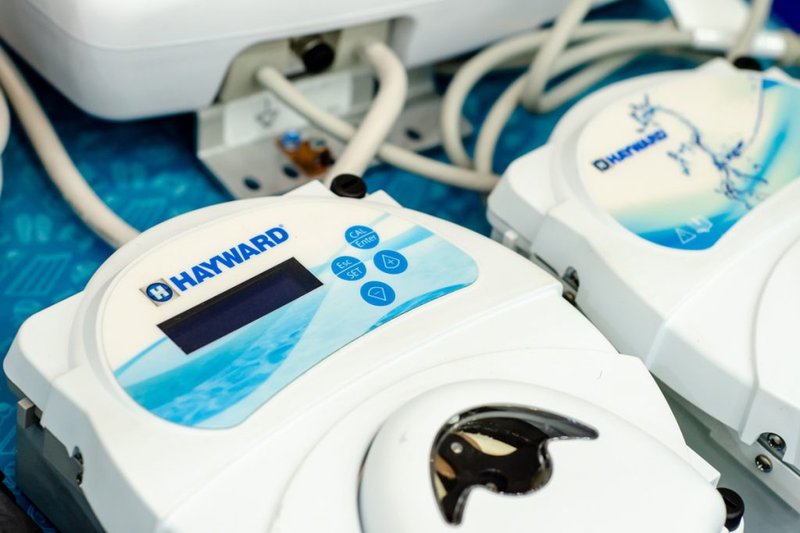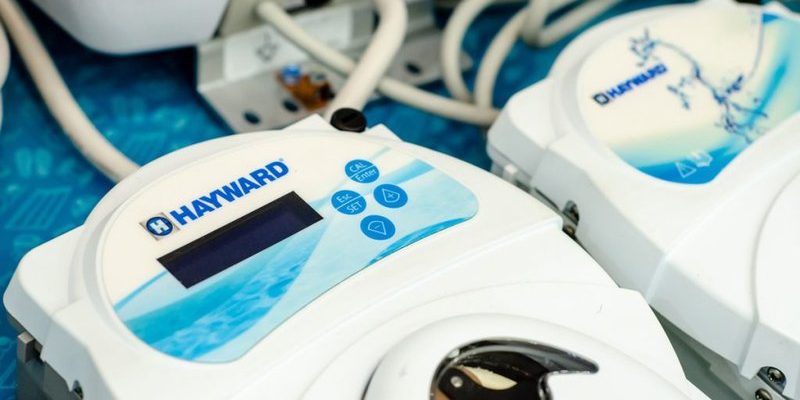
If you have a Hayward pool system, the remote is like your personal magic wand for temperature control. No more sprinting back and forth to the clunky wall panel or fussing with cryptic pool codes. Whether you’re using a wireless handheld remote, a wall-mounted model, or Hayward’s smartphone app, adjusting your pool’s temperature remotely is designed to be a breeze—even if you’re not the most “techy” person around.
Here’s the thing: learning to set the temperature with a Hayward pool remote isn’t nearly as intimidating as it seems at first glance. Let’s break it down together so you can enjoy your pool (or spa!) at just the right temperature—without all the guesswork.
Understanding Hayward Pool Remotes: Which Type Do You Have?
Before you can play poolside DJ with your water temperature, you need to know which Hayward remote you’re working with. Hayward offers a few different options, and they don’t all operate in exactly the same way. This matters, because the steps slightly differ between a wireless AquaPod, a wired wall remote, and the OmniLogic smartphone app.
Picture a universal TV remote versus the original that comes with your set. A universal might get the basics right, but only the brand’s remote unlocks every feature. Hayward’s remotes are built for deep integration with their pools and spas, but it’s easy to get tripped up if you try to use the wrong steps for your device.
You might have:
- AquaPod or AquaPod 2.0: This is Hayward’s wireless, waterproof handheld remote. Looks like a chunky TV remote or a mini tablet.
- ProLogic, AquaLogic, or OmniLogic Wall Panels: These are bigger control pads mounted near your pool equipment. Some have basic LCD screens; others have color touch displays.
- Hayward Smart Pool App: Works with OmniLogic and some upgraded systems, turning your phone into a powerful remote—with temperature control, scheduling, and more.
Take a quick look at your remote or control panel. Is it floating by your pool, hanging on the wall, or just an app on your phone? Once you know, the rest will make a lot more sense.
Connecting and Pairing Your Hayward Remote (The Basics)
Let me be honest—this is the step where most people (myself included, once upon a time) hit a wall. If your remote isn’t paired or synced to your Hayward system, setting the temperature just won’t work. Depending on your model, pairing can mean pressing some buttons, entering a code, or following prompts on the app.
Here’s a general roadmap for getting your Hayward remote connected:
- For hardware remotes (like AquaPod): Make sure the battery is charged. Take your remote near the base station, press the “Menu” or “Sync” button, and select your pool system. Sometimes you’ll need to enter a pairing code shown on the main panel.
- For wall panels: These are usually pre-wired and don’t need pairing unless you’ve reset the mainboard or added a new device. If problems arise, try a system reset—unplug and replug the main control unit after 30 seconds.
- Smartphone app: Download the Hayward app, create an account, and “Add Device.” Scan for your pool’s OmniLogic system (it may use Bluetooth or WiFi). Enter your pool’s unique code if needed.
If your remote just won’t connect, double check the battery, WiFi, or power source. Still nothing? Sometimes the remote just needs a full reset (hold down the power or “reset” button for 10 seconds, then re-pair).
It sounds obvious, but 90% of remote issues are battery or sync related—not hardware failure.
How To Set Temperature Remotely: Step-by-Step Guide
Alright, here’s the moment you’ve been waiting for—actually setting your pool or spa temperature with your Hayward remote. Whether you’re using a physical remote, wall panel, or app, the basic steps boil down to a similar flow. Just go slow, and don’t be afraid to poke around the menus.
- Turn on the remote or open the app. Make sure you see the home screen with your pool and spa listed. If you don’t, your remote might not be paired (see above).
- Navigate to “Heater” or “Temperature.” Some systems call it “Setpoint” or use a simple thermometer icon. On wall panels, this might be a physical button.
- Select your pool or spa. If you have both, you’ll choose which one to adjust. It’s like picking a playlist—don’t skip this step or you’ll be cranking up the wrong water!
- Adjust the temperature. Use the up/down arrows or slide to your desired temperature. Most systems let you set it in one-degree increments, usually between 60°F–104°F (spa max is usually higher).
- Press “Set,” “Apply,” or “Enter.” Don’t just back out—look for a prompt to save your new temp. If it asks for confirmation, go ahead and agree.
Let me explain with a quick example. Say you have a Hayward AquaPod remote:
You press the “Menu” button, scroll to “Heater,” select “Pool,” then tap the up arrow until it reads “82°F.” You hit “Set,” and that’s it—the system will now run the heater (or let things cool down) until the water hits your chosen temp.
If you’re curious, the Hayward app feels a lot like setting a timer on your phone. You just drag your finger to the right temperature, tap “Confirm,” and wait for your pool to start adjusting.
Troubleshooting: When the Remote Won’t Set Temperature
Honestly, even the best remotes have their off days—usually right when you’ve got guests on the way. If your Hayward pool remote isn’t letting you set the temperature, don’t panic. Most issues are easy to spot and fix.
- Battery Problems: If your remote is glitchy, laggy, or won’t turn on, it’s almost always a battery issue. Swap them out and try again.
- Signal/Sync Issues: If your adjustments aren’t registering, the remote might be too far from the base station or may have lost its pairing. Move closer, re-sync, or restart the system.
- Main System Locked: Sometimes the main panel is in “service mode” or “lock out.” Check the wall unit for any warning lights or lock icons. Unlock it or exit service mode to resume remote control.
- Heater Not Responding: Double-check that your heater is turned on and hasn’t tripped a breaker. If the heater is on but the temp won’t change, there might be a deeper equipment issue.
Here’s a little secret: if you’ve tried all of the above and nothing works, a master reset (turning the system off and on) often does the trick. Still no luck? Time to call a Hayward service tech—you might have a fried relay or wiring hiccup.
Why Remote Temperature Control Matters (And Common Use Cases)
You might be wondering, “Is remote temperature control really worth all this setup?” Here’s the thing: once you’ve tasted the luxury of poolside temperature tweaking, you’ll never want to go back. Think of it like the difference between manual window cranks and automatic climate control in your car.
Some classic scenarios where remote temp control shines include:
- Pre-heating for guests: Hosting a pool party? Set your pool to the perfect temp before anyone arrives (even from across town).
- Spa spontaneity: Decide last-minute you want a hot soak? Fire up the spa from your bedroom, and it’ll be ready when you are.
- Energy savings: Lower the temp when you’re not using the pool, then bump it up only when needed. Your energy bill will thank you.
- Travel mode: If you leave on vacation, you can keep your pool at a safe temp—without running the heater full blast while you’re away.
It’s about comfort, convenience, and a tiny bit of showing-off. Plus, if you ever switch to a universal or non-branded remote, you’ll quickly realize Hayward’s system just… works better together.
Comparing Hayward Remotes to Universal Pool Remotes
Let me be blunt: universal remotes can be tempting. They promise one device to rule them all! But when it comes to pool systems, especially for fine controls like temperature, the brand-specific remotes almost always work more smoothly.
Universal remotes might handle basic on/off, lights, or pump speed, but temperature control sometimes gets lost in translation—coded commands can misfire, odd errors might pop up, and you end up spending more time troubleshooting than relaxing.
Hayward remotes and their apps are designed to:
- Use specific temperature codes that sync perfectly with Hayward heaters.
- Offer dedicated pool and spa setpoints, so you’re not guessing which one is changing.
- Provide real-time feedback (the app or remote usually shows the current temp, target temp, and heater status).
So sure, a universal remote is cheaper upfront. But if you want true set-it-and-forget-it comfort, stick with Hayward’s own controls—or at least check compatibility before you buy.
Maintaining and Resetting Your Hayward Pool Remote
Remote controls aren’t exactly high-maintenance, but a little TLC goes a long way. Keeping your Hayward remote happy means fewer headaches and less time fiddling when you just want to swim.
Try these simple tips:
- Battery care: For handheld remotes, swap batteries annually—or whenever you notice a drop in range or performance.
- Cleaning: Use a damp cloth to wipe down the buttons every few weeks. Resistant grime or sunscreen can gunk up the buttons.
- Storage: Don’t leave wireless remotes baking in direct sun or floating in the pool for hours. Even water-resistant models last longer with a little shade.
- Reset wisely: If you ever need to reset, use the correct steps for your model. Usually, it’s holding down the power or reset button until the display blanks. Re-pair the remote as needed.
If you have a wall remote and it stops responding, check cable connections and power to the panel. For Hayward apps, keep your phone’s operating system up to date—sometimes a weird bug is just a software version mismatch.
Final Thoughts: Enjoying Effortless Comfort with Hayward Pool Remotes
So, what’s it all come down to? With a little setup and know-how, setting your pool or spa temperature remotely with a Hayward remote is about as easy (and satisfying) as ordering your favorite drink at a drive-thru. Once your remote is paired, charged, and synced, the rest is just a tap or two away—no complicated codes, no guesswork, and definitely no chilly surprises waiting in your pool.
Whether you’re firing up the spa on a snowy night or cooling off your pool before a heatwave, Hayward’s remotes and apps put true comfort in your hands. And if you ever hit a snag, remember: it’s usually something simple like a battery, sync, or settings issue.
So go ahead—make your pool the “just right” oasis you always wanted, with nothing but a click. The water’s waiting, and now it’s always the perfect temperature.
